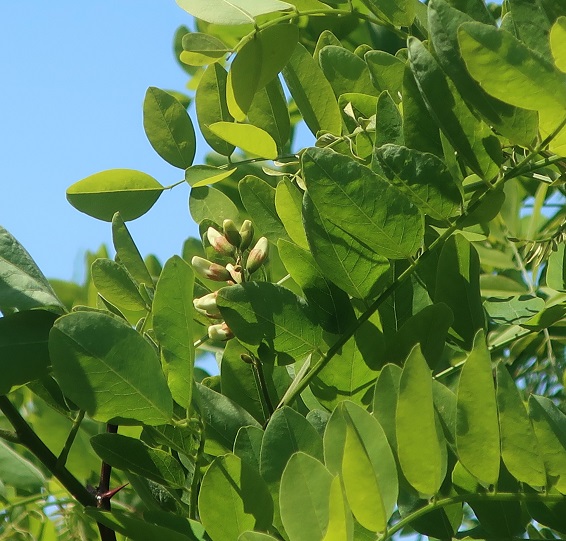
Kiev Acacia.
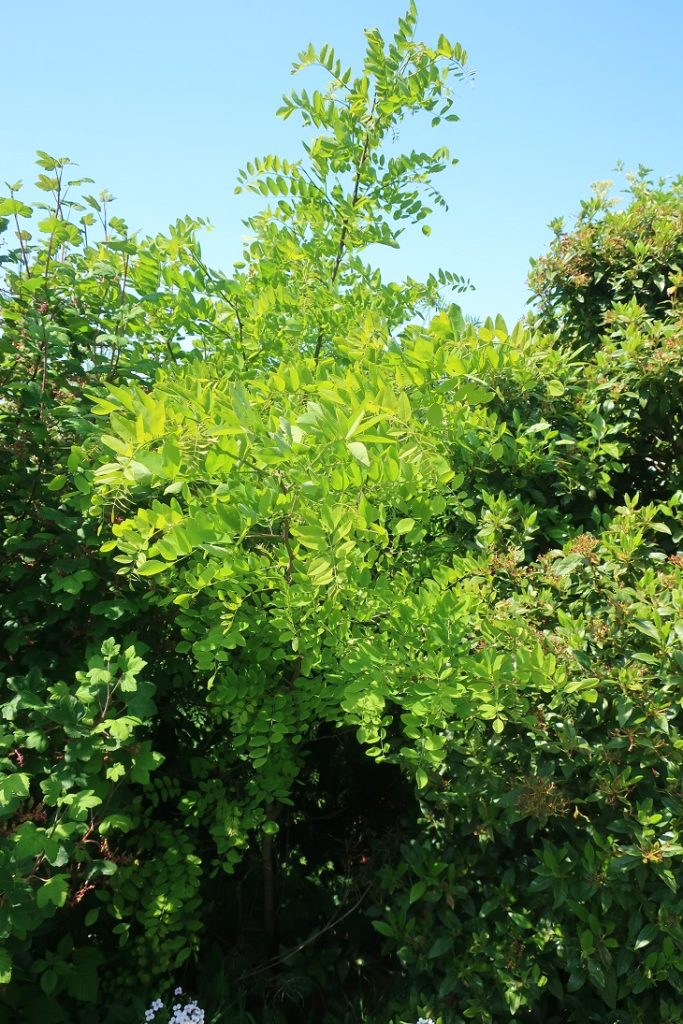
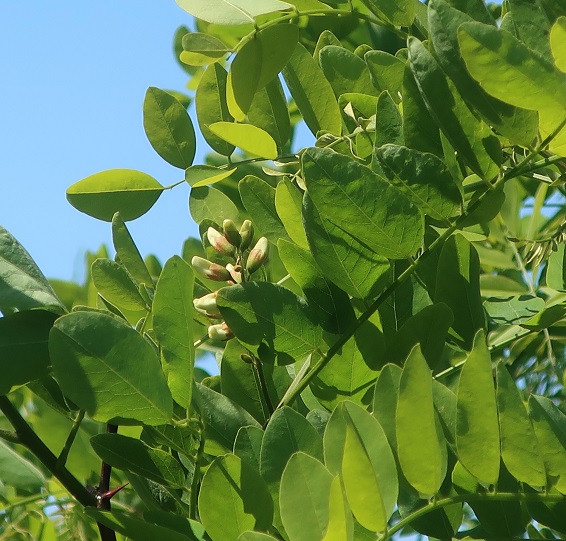
I’ve waited for ten years for this Pseudo robinia acacia to flower. I picked the seed pod up off the pavement outside a Kiev Metro station on the way to the Apimondia lecture centre in 2013. Over the years, I’ve nurtured this little tree which nestles beside the hedge not far from another acacia raised from a seed pod found in Meteora Greece over 20 years ago. Both of these have white flowers but the one I bought at a local garden centre has pretty pink flowers which is in marked contrast to its jaggy spines.
Setting up the Observation Hive.

It was time to set up the observation hive with an old queen from 2021 that I’d removed from the parent colony as part of swarm control when I found queen cells with royal jelly and nice little larvae bedded down. It was bee buddy Cynthia’s idea to give the old queen a comfy retirement home.
Since the nucleus was to stay in the home apiary, I shook in two extra frames of nurse bees and shut the nuc up for three days placing them in the breezy shade under a tree. If I had not shut them in the flying bees would have returned at once to the parent colony and depleted the nuc which would have been compromised and the brood chilled. I sprayed water through the mesh every day and when the time was up, I placed the nuc on a table outside the observation hive entrance. The plan was to wait a few days to let the bees orientate to this new position and fly out to forage before transferring a frame with the queen to the obs hive.
I invited Stephen Mc Carthy from Inverness over to help me since we had worked well as a team last year stocking the obs hive. The only hurdle was transferring a standard deep National brood frame when the hive was designed to hold 12×14” deep frames. However, I placed one of the latter on the top and will use this opportunity to watch the wax makers at work extending the lower edge of the standard deep bottom frame hoping that the bees make a tidy job.
I’d spent a good while cleaning the glass sides before Stephen arrived and had the back side taped in place with “Gorilla” tape. You can see the set up above. I shook in an extra frame of nurse bees but was not too worried about filling this wee hive because I knew that as soon as I moved the nuc box away the fliers would return to the observation hive entrance and be attracted inside. This is exactly what happened and there was a good-sized wee colony working away behind the glass almost at once. At the end of the first evening, I could see nectar stored in the cells of the top frame and a couple of days later the queen was up there laying. The newly queenless nuc was united that evening to a very small nuc that’s waiting for the queen from a chosen queen cell to emerge and it needed more bees.
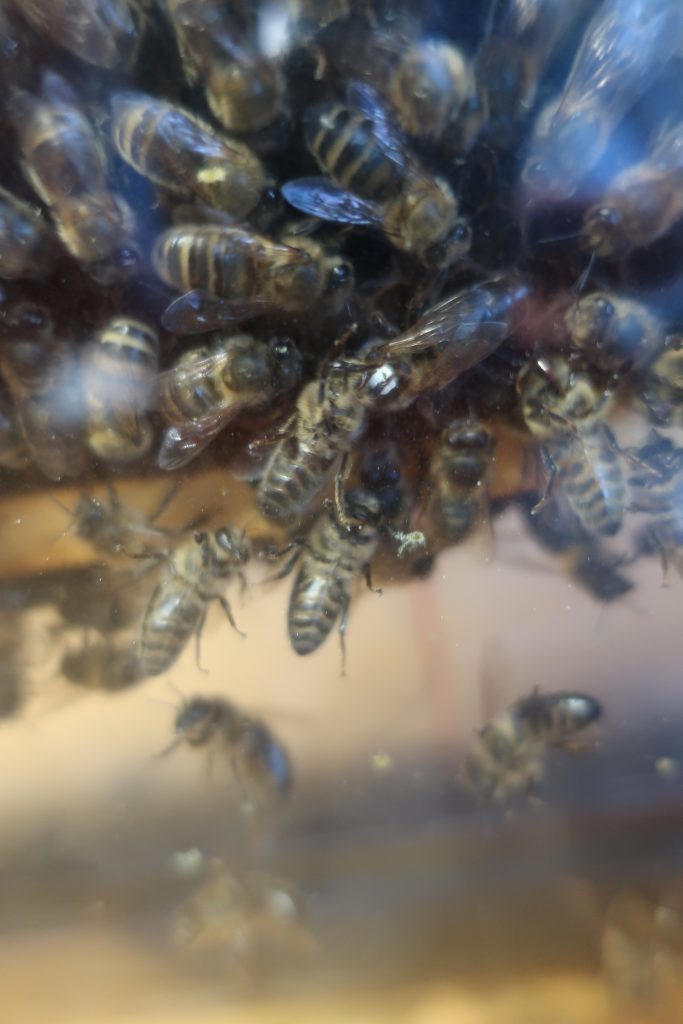
I watched the bees closely yesterday with my daughter-in-law Maayan and we delighted in seeing a pollen collector with bulging bags of orange whin pollen select a cell over the brood nest and kick off the pollen loads with the help of a house bee. It took a longer time for this bee to achieve this than another forager who slickly kicked off its load and returned to the entrance to disappear out for more.
I’ve watched the tremble dance performed this week when the nectar flow was full on and there were not enough bees to unload a forager. She had to wait too long to get rid of her nectar load and she moved into the centre of the frame and began attracting unloaders by shaking her body in a strange bouncing sort of irregular movement caused by the quivering of her legs backwards and forwards and to the right and left. I had never seen this before and I’m looking forward to spending a lot more time watching them this season.
The Wee Bee Apprentice.
Followers from my early blogs will remember Connie, The Wee Bee Apprentice Wins Trophy. (beelistener.co.uk). I’ve got great news from Wales. Connie and her family are getting a colony of bees this week from her new mentor Mary. Connie and I exchange letters in the post and she tells me about all the sports activities, and wonderful opportunities in the south including getting started with bees. Connie started beekeeping with me when she was 6 nearly 6 years ago. I think we can look forward to a guest blog one of these days!
Introduction to Jane’s blog.
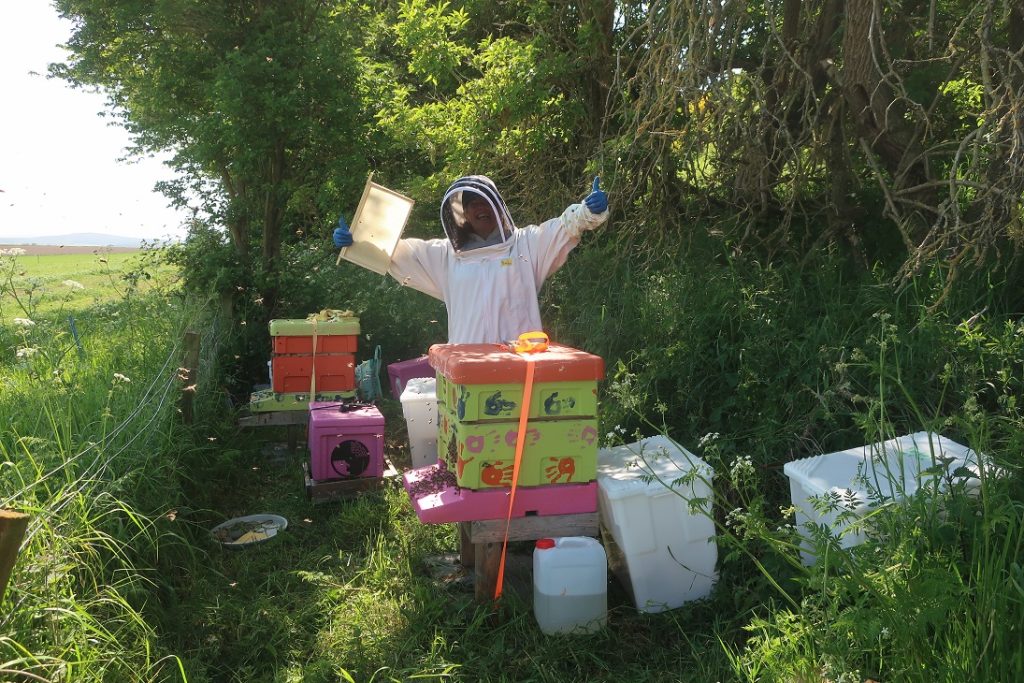
Jane Geddes is one of our regular guest bloggers and she shares her story of moving the bees to a new location only about 15 miles away but with such different foraging opportunities and colony management implications. Thank you, Jane, for sharing your insights and thoughts on beekeeping in a new area. It is remarkable how much difference a few miles and location make.
Taken by Surprise.
We flitted in the middle of December 2022 and moved from a house 260 metres above sea level down to a farm at 14 metres above sea level. I had always noticed that there was at least a 3-degree temperature difference between the house on the hill and driving down to town, however what has been more of a surprise (and awe) is the variety, and sheer volume of forage for my bees.
And I had always been very aware (and, during the first few years of beekeeping, worried) when I heard talk about swarm season, forage, colony build up and so on. I was hyper-aware, and then gradually relaxed when I realised that my bees did not behave as others did. In all aspects of beekeeping, I was roughly three weeks behind my colleagues down in the town. Swarm season there seemed to “finish” as mine “started.”
Up on the hill, I rarely managed to get any spring honey except for in 2022 when spring was still and we missed the horizontal westerly winds and driving rain. In summer, my bees aways managed to produce honey from clover (with quite a decent amount of ragwort at times, which gives an acrid taste!) and almost always some heather. We were lucky in that we backed onto a heather moor.
Over the years this has led to a rather chilled, laid-back attitude to beekeeping (or bee monitoring). Obviously, I spent time undertaking disease inspections and monitoring varroa, however for the greater part, I spent a lot of time at the hive entrance, watching the bees coming to and fro, and observing the colour of pollen loads (huge amounts of gorse), prolific amounts of pollen from willow, and constantly (still) wondering why, or how, the car can be covered in the yellow dusty pollen from Scots pines, but the bees appeared disinterested (this question remains)
We moved in the depth of winter. The bees moved house to 5 miles down the hill to have an extended holiday with my “Bee Mummy” (mentor). They had a lovely time and moved to their new abode up off the beaten track at a beautiful secluded spot at the back of the farm, well away from passing visitors, looking out on the ruin of an old house, and surrounded by blackthorn, hawthorn, and a backdrop of gorse bushes. Breathtaking, though it was quite a workout to get the bees and beekeeping paraphernalia to the site. Luckily The Farmer is so helpful with offers of the quad bike or tractor for transportation. But I prefer to sweat it out and get exercise walking up to the apiary.!
Looking out of the bedroom window one sunny April morning, I was a tad puzzled by the “yellow look” of the grass in the field opposite. I thought it was a new crop. Everything down at low level is a different world. This new “yellow crop” as I thought, was my own ignorance, I have to say. Dandelions. Up on the hill, we had NONE. Here at lower levels, there is a rug, no, a thick pile carpet that stretches as far as the eye can see! All around the farm, the sides of the road, the fields, the verges around the farm, literally every spare space was covered. The Farmer likes dandelions, and loves the colour so leaves them alone. Walking the dog, I could hear bees everywhere (up the hill they flew from behind the shed to the gorse at the other side, away from the house). Look down and there they were, everywhere, loaded pollen baskets, lugging themselves back up the little hill to the apiary.

Dandelions merged into fruit blossom from the trees in the yard, frothy blackthorn appeared, and I found bees on the hawthorn bushes at the entrance to the apiary. Pollen from hawthorn is a beautiful creamy white colour! And the “moving” hedge outside the Farmers house- the cotoneaster flowers almost obliterated by bees feasting- an amazing sight. Then, sitting for ages watching a rainbow of colour going into the hives, and the feeling of amazement at the variety and sheer volume of plants!
Needless-to-say, complacency from the hillside-apiary-my attitude was in for a shock. Lots of forage means a busy Queen…
But that is another story.
If you enjoyed reading this, you can subscribe to receive future posts by email. Also, if this article helped you with your work, please consider making a small donation to keep our site running. You can do this through the “Donate with Paypal” button that appears at the side of the screen if you are using a desktop, or by scrolling towards the bottom of the page if you are using a mobile.
Thank you, Ann 🐝

That’s fantastic with the acacia tree patience and nurture pay! Jane that’s amazing to have so many dandelions they are my favourite wild flower. Your farmer is an unusual person as most poison them so hats off to him/ her. Every year I eat the leaves, flowers and make tinctures, tea and this year dandelion mead. While collecting flowers near you Ann I saw so many bees on the dandelions.
Thank you for commenting, Susan.
Ann: Lovely to learn that you have a black locust tree growing well at your house. These trees give beekeepers like me in eastern U.S. (the region to which this tree is native) a lovely honeyflow in early summer from its profuse flowers.
Jane: I think that the reason bees do not collect pine pollen is that pines are wind pollinated, so these trees do not need to invest in putting “goodies” (fats, protein, etc.) in their pollen to make it attractive to pollinators. And thank you for making the comparisons of your colony’s vigor in the higher and lower locations. Shows the importance of apiary location.
Thanks Tom – I’d even thought about wind pollination but didn’t really think about the “content” of the pollen itself. It just seems as if there is so much!! I had assumed that the bees would use everything available.Thank you for the answer- it had always been floating in, and then out of my head at certain points in the year. Jane